|
Essay by Sonja Thomas: Dreams, Nightmares, and Magic Dreams What do you want to be when you grow up? My answer was never the same. A backup singer like Wendy and Lisa in Prince’s the Revolution. A cartoonist for The Simpsons. A writer like Judy Blume. A dancer, a photographer, a Broadway actor . . . The main character in my new book, OLIVE BLACKWOOD TAKES ACTION!, dreams of directing award-winning movies, just like her dad did before he passed. Eager to apply to an elite summer film camp, Olive’s excited when her film teacher promises a personal recommendation to the winner of the class project. Nightmares In college, I was too afraid to pursue anything creative. So, I became an accountant instead. Eventually, I rediscovered my love of writing. But I was tormented with depression and anxiety. I wrote. I was rejected. I cried. A lot. After a decade, I sold a short story. Then several more. And soon my first novel. What if no one reads it? If they do, I’m sure they’ll hate it. My fear ballooned. Unlike her dad, Olive’s anxiety has her avoiding the spotlight. Staying behind the camera is much easier than having to interact with people. Speaking in front of an audience makes it hard to breathe. She’s plagued with catastrophic thoughts, nausea, sweating while shivering, and diarrhea attacks. Sometimes the fear’s so crippling, she stays in bed. Or it knocks her out with a panic attack. Olive and I share all these anxiety symptoms. Magic Olive and her best friend Kayla started their Book of Enchantment in the third grade and filled it with spells. They do their best to follow the rules of magic. Like life, magic is a mirror of what you believe. It’s stronger when done together and the possibilities are infinite. Magic is a verb. It only happens when you take action, unfolding in its own time and way. Olive and I live with anxiety, but it doesn’t define who we are. Family and friends make us stronger, reminding us that we’re never alone. That strength helps move us toward our dreams, one step at a time. We can’t control other people’s actions or the stuff that life throws at us. So, we try not to take it personally. Instead, we create boundaries, trust our gut, and open to all the possibilities. Magic is make believe. Our belief in ourselves is the most powerful magic there is. A silly introvert ruled by coffee and cats, Sonja Thomas (she/her) writes stories for kids of all ages. Her debut middle grade novel, SIR FIG NEWTON AND THE SCIENCE OF PERSISTENCE, is an Oregon Book Award finalist, an Oregon Spirit Book Award Honor recipient, and a Washington State Book Award finalist. She’s also a contributing author for GOOD NIGHT STORIES FOR REBEL GIRLS: 100 REAL-LIFE TALES OF BLACK GIRL MAGIC. Her second novel OLIVE BLACKWOOD TAKES ACTION! received “Two thumbs up for this necessary novel about anxiety and self-advocacy” from Kirkus Reviews. www.bysonjathomas.com
We are proud to feature member Valerie Bolling on the blog today! Valerie shares her latest early reader book, RAINBOW DAYS: THE ORANGE WALL, illustrated by Kai Robinson. KLiC: What was your inspiration for RAINBOW DAYS: THE ORANGE WALL? VB: I wanted to write a Scholastic Acorn series and needed to come up with an idea that would interest young readers – a book that they’d be excited to read on their own. Since most children enjoy being creative and adore animals, I decided to write about a girl and her pup who enjoy making art together. Once I decided on my characters I had to choose their names. Zoya’s name is a combination of my nieces’ names, Zorah and Anyah. My younger niece, Anyah, loves art, so she’s part of the inspiration for art-loving Zoya. I pictured a brown dog, so Coco seemed like a good name for a pet-friend. (There’s no “a” at the end of Coco’s name because it needs to be spelled in an accessible way for early-readers, which is also why there’s no “h” at the end of Zoya’s name, even though my nieces’ names end with an “h.”) KLiC: What’s the one thing you want children to take away from your book? VB: I want children to make art! Perhaps, if they’re fortunate enough to have their own bedroom, like Zoya, they may choose to give it a makeover, or do something on a smaller scale, such as decorate a notebook, t-shirt, or dessert. All children should see themselves as artists, knowing that with their imagination and some paint, markers, frosting, or whatever they’d like, they can make something fabulous! KLiC: What’s next for you? VB: On June 4, my co-author, Kailei Pew, and I are excited to welcome I SEE COLOR, into the book world. This book is illustrated by Laylie Frazier, edited by Luana Horry, and published by Harper Kids. We’re honored that it has been selected as a Junior Library Guild Gold Standard Selection and has received a starred review from Kirkus. If you subscribe to the KidLit in Color blog, you’ll have the opportunity to read an upcoming post about our book. In the meantime, feel free to find out more about this book here. Valerie Bolling is passionate about creating stories in which all children can see themselves and feel seen and heard, valued and validated. She is the author of six picture books: LET’S DANCE! (SCBWI Crystal Kite Award winner), TOGETHER WE RIDE, TOGETHER WE SWIM (2023 Kirkus Prize Finalist), RIDE, ROLL, RUN: TIME FOR FUN!, BING, BOP, BAM: TIME TO JAM!, and I SEE COLOR (a Junior Library Guild Gold Standard Selection). She also wrote RAINBOW DAYS, a Scholastic Acorn early reader series.
A graduate of Tufts University and Teachers College, Columbia University, Valerie has been an educator for 30 years and is an active member of the kidlit community – teaching picture book classes (independently and for the Highlights Foundation), serving as a mentor, and presenting at conferences. Valerie lives in Connecticut with her husband where they enjoy traveling, hiking, reading, going to the theater, and dancing. Learn more about Valerie: Website: valeriebolling.com Twitter: twitter.com/valerie_bolling Instagram: instagram.com/valeriebollingauthor Facebook: facebook.com/ValerieBollingAuthor Author Visit Information We're thrilled to welcome Paola Santos on the blog to discuss her upcoming book, How to Eat a Mango with illustrations by Juliana Perdomo. What was your inspiration for How to Eat a Mango? My inspiration for How to Eat a Mango was my abuelita, my grandmother, and everything it means to return to my roots in Venezuela, the country I was born and raised in. I remember my Abuelita, sitting in the backyard of our house, completely immersed in the experience of eating a mango. Every time she offered me one, I would refuse, but I also remember watching her and wishing I liked them as much as she did. In Venezuela, the matriarchal presence is crucial. Mothers and grandmothers are the center of the home. My Abuelita lived with us. She had a strong character and was always bustling around the house. Abuelita wasn't as sweet as Carmencita's grandmother, the protagonist of my book. Still, every time she ate a mango, it was like watching a poem in motion: her delight, eyes closed enjoying every bite, hands bathed in pulp, her fingers and teeth opening the mango skin. I love that memory! In those days, however, mangoes meant work for me, picking them up when they fell heavily from the tree, breaking and scattering across our yard. The rancid smell of the sun-drenched rotten mangoes was a sensory assault. The ripest ones were squashed, becoming a feast for the bugs waiting for something to eat. But it wasn't all unpleasant. There were moments when I enjoyed watching the come and go of our neighbors, acquaintances, or even some occasional passersby who would take away bags of mangoes. That act of sharing and community has been a memory that has also been imprinted in my mind. Today, mangoes have taken on a different meaning for me. The memories of work or foul smells have been replaced by nostalgias, nostalgia for knowing I won't enjoy those moments with my abuelita again, and the nostalgia for knowing that perhaps I won't be able to return to my country and see it prosperous and full of dreams like in the memories of my childhood. Please tell us about your writing process. How long did it take you to write and sell this book? I had never thought about this! First, I daydream and search through the nooks of my memory and emotions for what filled me and made me reflect when I was a child. After that, I crawl under my sheets and write in my notebook. I let the words come to me in an endless mix of Spanglish without looking at grammar or spelling rules. I let out, first, what I remember and then loose ideas that could serve as the foundation of a story. This part is very intuitive. When I finally have a picture of the structure and the beginning/end of the story, it's time to go to my computer. There, I shake off my ideas, remove the excess, and write them down. Ready to subject them to a long rewriting process that varies with each story. In this process, I evaluate the technical aspects, the rhythm, and the musicality (which I love to apply to my manuscripts) and the layers that can add depth. After that, I rely on the help of my fabulous critique partners, who help me see things that have gone unnoticed. Then comes the best part, working with my agent in a back-and-forth of ideas that bring out the best in each of my words. Phew, it's a long process, which tires me out just writing about it. "How to Eat a Mango" was four years in the making, from the initial idea to its publication, which is slowly approaching! The moment that helped me find this memory was in 2021, during Tara Lazar's Storystorm, which I'm sure most of you are familiar with. That specific exercise was about exploring How-to's. Immediately, the image of my abuelita eating a mango came to mind, and I couldn't let it go. Right away, I started working on it, dedicating approximately a year to the process I described above until my agent and I considered it ready and started the submission process. The waiting period after that varies from one manuscript to another. With "How to Eat a Mango," I consider myself lucky. In 2022, a month after starting the submission process, Neal Porter Books made me an offer. The book will finally be released on July 16, 2024. This year! I cannot wait to see it out in the world and connect with readers. I hope you enjoy reading it! What are your favorite illustrations in the book? All of them are my favorites! Now, if I had to choose, I would choose the moment when Abuelita speaks to Carmencita about the sensation of tasting a mango. The first time I saw this illustration by the talented Juliana Perdomo, I cried. Seeing the joropo, the national dance of Venezuela, I felt the same as Carmencita. My heart seemed to beat with the stomping, the movements of the skirts, the sounds of the cuatro and maracas. It was an indescribable experience. But what moved me the most was how well the emotions of my words were conveyed in it. The music, the sweetness, and the culture are palpable in this spread. What’s the one thing you want children to take away from your book? I hope they take away a deep sense of respect toward nature and family and how they connect with every aspect of our lives. With this story, I wish young readers would slow down, pay attention to their surroundings, and treasure the moments that make their lives unique and fantastic. My goal with this book is to build a bridge between these moments and the present so they can create future memories. Paola Santos is a children's book author born and raised in Venezuela. After moving to Canada, she found the courage to share the words and stories that had long been enclosed in her imagination. Her stories are now woven with her culture, experience in a new country, hope, happiness, and diversity. Paola holds a bachelor's and a master's degree in Literature and Children's Literature and Reading Promotion. Her debut picture book, How to Eat a Mango (Holiday House), illustrated by Juliana Perdomo, will be released on July 16, 2024.
You can learn more about Paola here. Twitter & Instagram: @pgsantosb. To preorder How to Eat a Mango visit here. Interior from How to Eat a Mango. Text copyright © 2024 by Paola Santos. Illustrations copyright © 2024 by Juliana Perdomo. Reproduced with permission from Holiday House Publishing, Inc. All Rights Reserved. What’s Already Been Told By Tonya Abari The market is becoming oversaturated with diverse children’s books about hair. In 2019, when I began querying Locs, Not Dreads for the second time since I first wrote the manuscript in 2013, much of the feedback that I received was that the market was becoming oversaturated with books about Black hair. With the success of Matthew A. Cherry’s Hair Love, Derrick Barnes’ Crown: An Ode to the Fresh Cut, Natasha Tarpley’s I Love My Hair, author/illustrator Sharee Miller and independently published natural hair series by Crystal Swain Bates – and with growing national support for The Crown Act – traditional book publishing and mainstream media further showcased the special relationship that Black folks have with hair. I didn’t have one picture book about Black hair as a child, so I’m ecstatic to fill my daughters’ bookshelves with mirrors. In this house, there is no such thing as too many! We buy them all. Growing up in salon culture (my mom was a career cosmetologist), I’ve been around hair all my life. At one point, after returning my hair from its relaxed state to its natural state, I even thought I wanted to open up a natural hair salon. Although I never took that route, I knew as a children’s author that hair would be one of the many topics I wanted to explore. I queried many agents, cold pitched editors, and participated in Twitter pitch events. I did receive some initial interest, but I also was told that in the coming years there would be way too many books about Black hair. Was I too late? At first, I took this advice with a grain of salt because how many anthropomorphic books are out there? How many books with unicorns and princesses and ladybugs? Yes, there are now more books than what I had growing up about Black hair – but I haven’t seen my book yet. I had to keep this energy alive in my soul. But as rejections rolled in one by one, I wondered if there was enough room for my story. I finally found a great home for the book – with an indie editor/publisher who understood its significance from the jump. And I now realize that if I would have taken those words “it’s already been told” to heart, there might not be a Locs, Not Dreads publishing on September 5, 2023. While Locs, Not Dreads is based loosely on my niece and her mom, who loc’d their hair well over a decade ago, the manuscript is littered with familiarities that I’ve experienced as a girl, woman, mother, student, and educator who is unapologetic about rocking natural and/or loc’d hair. In fact, as a teacher, I taught many lessons on denotation and connotation relating to Black hair terminology – and those lessons are ones that I’ll never forget (they are now memorialized in the pages of my debut picture book). I knew that fact alone separated Locs, Not Dreads from the other picture books that were on the market even if no one else had picked up on these nuances. This brings me back to my original point. There can never be too many stories that exist, especially for groups that have historically been marginalized in traditional publishing. My advice to new writers who have stories that have seemingly already been told: tell your story anyway. The spectrum of our experiences run so deep. Perhaps the topic has been written about before – but it definitely hasn’t been written by you. Locs, Not Dreads written by Tonya Abari, illustrated by Chasity Hampton publishes on September 5, 2023 with The Innovation Press. For additional information, be sure to follow Tonya online at www.tonyaabari.com or on Instagram.
Enjoying the Journey to Illustrating Children’s Books by Erika Jones My road to becoming a professional kidlit illustrator was long and unpredictable. Sometimes it was hard, but I wouldn’t trade it. In fact, I still look at this as one big adventure with lots of good surprises ahead. And while I love sharing wisdom to help others fulfill their creative dreams, I’ve realized I can’t predict how another person’s path will unfold. I certainly could not have predicted my own journey - I sometimes feel like I am just following breadcrumbs like a character in a fairy tale. For years I tried the approach of applying every piece of advice someone in the field said or wrote, and it wore me out. I learned it's best to go with what resonates and follow my intuition. So rather than write my “blueprint” to getting published, I’ve decided to share some things that helped me stay the course. And while they may not make your journey to publication faster, they could make the journey more fun and sustainable until your big breakthrough comes. 1. Draw things that make you happy and put them in your portfolio. You’ve likely heard you need a professional portfolio - a website featuring your best body of work. You do! But trying to include everything in your portfolio that everyone you consult with suggests, is likely unnecessary. Simply include the art that represents the kind of art you’d like to make in the marketplace. And as a bonus, use the media you really enjoy using, because to quote illustration agent, Lilla Rogers, “People buy your joy!” My first two picture books illustrate this point. I believe The Loud Librarian illustration opportunity came to me in part because my portfolio had a fun picture book scene featuring a library. My next book, Black Girls: A Celebration of You was likely offered to me because I had a number of adorable Black girl characters in my portfolio. I was also asked to work in cut paper - my favorite medium - because I had examples of this in my portfolio. 2. If you can get paid to level up your portfolio, do it! As I’ve worked on professional projects in education and trade books, I’ve had the opportunity to get paid (and professionally art directed) to create an array of characters and scenes that weren’t previously in my portfolio such as characters of different ethnicities and abilities, animal characters, as well as children playing and doing things I might not have been inspired to draw without a manuscript prompting me. Also, it is a game changer to have professional direction to help elevate your clarity, composition, and storytelling in a scene. Once I started working with art directors and book designers, I realized it is the only way I wish to work. Because illustration is best when it's collaborative. 3. Find learning environments and mentors you vibe with. Before you can get paid, you will likely have to invest in training. This isn’t my first career and I didn’t attend traditional art school. I learned much of what I needed to know through virtual classes taught by working artists, agents and editors. When I started my journey (nine years ago) online education was just blossoming. Today there are a plethora of opportunities to learn from quality teachers. If you start and don’t quit (breaks are okay) you can absolutely become a professional illustrator. I recommend taking classes with deadlines, because you’ll have to learn to manage them as a professional illustrator. I also enjoy classes with live interaction because they’ve allowed me to meet art buddies, critique partners, and friends. In my courses I’ve also encountered wonderful teachers, and some have become mentors. Not only have they shared art skills, but also tips for what it’s like to work in the field and how to avoid pitfalls. This combination of wisdom and knowledge can be invaluable when you start picking an agent and trying to figure out which projects to accept, etc. Illustration can be an isolating career. Unless you work full time for a corporation, or on collaborative projects, most work is done virtually and then uploaded for feedback. However, it doesn’t have to be lonely. As I said before, taking classes can be a great source of connection. But so can joining associations like SCBWI and attending conferences for artists and illustrators virtually or in person. Reaching out to people who are on a similar journey on social media and setting up a call can also be an effective way to connect and build your art village. 5. Stay in Your Lane. By this, I mean focus on where you’re headed vs. on what others appear to be doing. In the beginning, I wasted lots of energy comparing myself to other artists. At times it would suck the joy right out of me and make me want to quit. I’m not saying you can’t get inspiration from social media or cheer for fellow creatives, but the moment you start to think: “I’ll never be THAT good,” or “I wish I could have gotten to work on THAT project,” or “How can I get as many followers as them?” you likely need to unplug and take a break. It’s time to reconnect with the fact that what’s for you is for you on this journey. When I find myself here, I remind myself that there are things only I can bring into this world, there are stories that only I can help tell, and my job is to be ready and receptive when those ideas and opportunities show up. My job is not to be the best at anything but being me. When I got clarity around this truth, my work and career started to flourish and I have no doubt yours will too. Being a professional illustrator is a dream come true for most who do it, but you will likely hit rough patches on the way to publication and during your career. I hope some of these tips help you keep going when you need it most. “Enjoy the journey” became more than a cliche to me when I realized the part in between the big accomplishments is most of the life I’d be living. So my hope is that you find ways to love and enjoy the path that is uniquely yours on the road to success. Erika Lynne Jones is the illustrator of The Loud Librarian by Jenna Beatrice (published by Simon Kids) and Black Girls: A Celebration of You (to be published by HarperCollins on September 26). Erika lives in Dallas, Texas with her husband and three children. Her author/Illustrator debut Zara In the Middle will be released in Summer 2025.
To learn more about Erika, visit her website here! A Juneteenth Conversation With Tonya Abari and Alliah L. Agostini Are you looking for children's books about Juneteenth? Be sure to check out two titles from our very own Alliah L. Agostini, illus. by Sawyer Cloud (The Juneteenth Story) and Tonya Abari, illus. by Tabitha Brown (Let’s Celebrate Juneteenth). We sat down with these authors in a brief conversation about commemorating Juneteenth. 1. How did learning (or not learning) about Juneteenth as a child impact your knowledge of this history as an adult? AA: I’ve always known about Juneteenth because my Buffalo, NY community has long celebrated it- but my knowledge of the depth of the history behind it and its evolution is something that eluded me until I started research for The Juneteenth Story. Juneteenth was never discussed in any of my history curriculums from elementary through graduate school. TA: I did not learn about Juneteenth until my early twenties. That’s right. All of public K-12 and undergrad, and not a single mention of Juneteenth (*shaking my head emoji*). It wasn’t until a chance trip to Houston that I gained knowledge of Juneteenth by witnessing several local celebrations. I quickly began researching and knew that I’d devote more time incorporating additional education for myself and my (at the time) future family. 2. What Juneteenth traditions do you have/have you started with your own family? AA: My grandfather helped start the Juneteenth Festival in Buffalo, NY in 1976, so I grew up going to and even helping out with the festival. It was celebrated annually in Martin Luther King Jr. Park on the east side of Buffalo, and it was huge - it has been touted as the third-largest Juneteenth festival in the world. I fondly remember going to the festivals, watching the parades, and gorging on barbecue chicken, hot dogs, and sno-cones. After I left Buffalo for college, I remember not being able to find any large festivals in the other cities where I lived after, and I realized how special our celebration truly was. Now that the holiday has broader awareness, I’ve enjoyed barbecuing, blasting my Juneteenth playlist, making crafts, and going to local festivals with my family. TA: Since we didn’t celebrate Juneteenth growing up, I’m the official tradition starter for my family. We begin the day with reflection and education — reading books, watching documentaries, whatever we can get our hands on. This year, we are participating in a walking tour where we’ll get to know more about Nashville’s Black history. My oldest selects a Juneteenth recipe and we make it as a family with our midday tea (my husband is Nigerian, so jollof has made its way to every celebration including Juneteenth, ha!). In the past decade, we’ve attended citywide celebrations, barbecues, and enjoyed a nice spread at home. One of these years I’d like to make it back to a rodeo, just like the one I saw in Texas in my 20s. 3. What is your favorite dish associated with Juneteenth? AA: Red sno-cones!! I love their crunchy, sweet, icy goodness. I occasionally even helped sell sno-cones at our festival, so they are very nostalgic to me. TA: Hibiscus tea is a favorite in our household. The flower is bright red, flavorful, and native to Africa. The formerly enslaved also incorporated this tea in the first Juneteenth celebrations. We like to remix the teas, adding peppermint or lavender — and the tiny humans dress up for our “Noonteenth” tea parties (Alliah, can you dig the mashup?). AA: Noonteenth?! I LOVE IT! 4. What do you most enjoy about Juneteenth celebrations beyond food? AA: The vibe. The many sights, sounds, feels and smells of Juneteenth create a sensorial vibe like no other. From the multi-colored Afrocentric clothing worn by attendees and sold by vendors, to the many hair textures and styles, to the smell of barbeque smoke and incense, to the bass coming from speakers and shouts of drill teams and other paraders, there’s nothing like it. TA: The keeping of our history is so important. Through these traditions, we celebrate and live in our joy. We have endured unimaginable circumstances, and still we thrive. It’s beautiful to see folks coming together to honor that. 5. What have you found most eye-opening in your conversations with others about Juneteenth since it became a national holiday? AA: I’ve found the sense of guilt that so many people, especially African-American people, have about not knowing about the holiday, to be really sobering. So many of us feel almost deceived and willfully undereducated, but the reality is this lack of knowledge is the direct consequence of curricula that excluded so much of our [Black] history. It’s not our fault- we didn’t know what we didn’t know! But now that we do know, we can use this as an opportunity to right these wrongs and teach ourselves and the next generation, and fight for continued access to books and curricula that tell our story- even when certain forces *a-hem* attempt to suppress access. TA: I have to admit that I felt so guilty for not knowing about Juneteenth. And an even bigger secret is that I felt guilty writing a board book about it knowing that I did not commemorate Juneteenth until adulthood. But upon deep reflection, I knew I wanted to write a book that introduced babies and toddlers to the significance of Juneteenth — the same way that I was introduced to it. You’re absolutely right. I felt deceived! But the untold and undertold [Black] history is not my fault. And now that I know better, I’m certainly doing better. 6. As the holiday becomes less ‘novel’, what message do you hope remains in the mind of those who celebrate? AA: I hope people continue to keep the roots of Juneteenth at the forefront. This holiday celebrates the delayed emancipation of generations of enslaved African-descended people, the people who toiled and built this country under a brutal, racist, inhumane system. Holidays tend to be diluted, commercialized, and generalized with time. Let us not forget who and what is at the core of this celebration. TA: You took the words right out of my mouth, Alliah. To add, I just saw a post online from a banner in SC that advertised Juneteenth with non-Black folks at the center and er um…no, no, no. It’s also cool that big corporations like Walmart now carry Juneteenth merch, but it’s important to remember to support Black-owned businesses, especially on Juneteenth. I’ll repeat: Let us not forget who and what is at the core of this celebration. AA: Amen! For additional Juneteenth reading recommendations for young readers, check out these lists:
KidLit in Color author Valerie Bolling is excited to reveal the cover for BING, BOP, BAM: TIME TO JAM! (illustrated by Sabrena Khadija and published by Abrams Appleseed). This picture book, which is a companion for 2022’s RIDE, ROLL, RUN: TIME FOR FUN!, will be released on August 8, 2023.
What does the cover say? First of all, shout-out to Sabrena Khadija for the amazing illustrations! I continue to love Sab’s unique style of making magic with geometric shapes. This cover “jams” with music and joy, and it emanates the characters’ energy and excitement. It says, “Come join the party!” Why should folks read this book? Do you love music? Do you enjoy a party? Do you like spending time with friends? If any or all of these are your jam, then BING, BOP, BAM is for you! This rhyming book celebrates a neighborhood’s musical block party that features an intergenerational community, instruments and food from around the world, and, of course, fun. What’s Next? On May 2, 2023 the first book, THE GRAY DAY, in my early reader series, RAINBOW DAYS (illustrated by Kai Robinson and published by Scholastic Acorn), will make its appearance, and the second book in the series, THE GOLD BOWL, arrives in September. TOGETHER WE SWIM (illustrated by Kaylani Juanita and published by Chronicle) will be released on August 15, 2023 – a week after BING, BOP, BAM. Looking ahead to 2024, I’ll welcome the third RAINBOW DAYS book, THE ORANGE WALL, as well as I SEE COLOR, a co-authored book with Kailei Pew (illustrated by Laylie Frazier and published by Harper Collins). I’m excited to get these books into schools, libraries, bookstores, and, ultimately, into the hands of young readers. Hello Everyone! My name is Alyssa and I am a member of KidLit in Color. I am so excited to talk about the value of mentorship programs in this post because they were such an important aspect of my writing and publishing journey. I was fortunate enough to win three mentorship programs: The Las Musas Mentorship, The Word’s Editor-Author Mentorship, and PB Chat’s mentorship. More information about those opportunities and more below. First, I want to share WHY mentorship programs are so invaluable.
There are MANY more reasons why mentorship programs are invaluable. But now I will share some TIPS for applying for mentorship opportunities.
Please see below some mentorship programs to keep on your radar based on what genre/age group you write for. Picture Books The #PBChat Mentorship
Middle Grade/YA/Adult Nevada SCBWI Mentor Program
AWP: Writer-to-Writer Mentorships
Write Team Mentorship Program
Diverse Voices DVMentor Program
DVDebut Program
Avengers of Colour
Author Mentor Match
All Levels PB-YA SCBWI Mentor Programs
We Need Diverse Books Mentorship Program
Las Musas Hermanas
Editor-Writer Mentor Program
Children's Lit Fellows
#QueerKidLit Mentorship Program
Mentorship for Desi Writers
Write-Mentor Spark Mentorship
Latinx in Publishing Writers Mentorship Program
Be Your Own Mentor (a website providing resources on revising, industry, craft) I hope you enjoyed this blog post and found it informative. If you have any questions please feel free to contact KidLit in Color at https://www.kidlitincolor.com/contact.html Alyssa Reynoso-Morris is a queer Afro-Latinx Dominican and Puerto Rican writer, wife, mother, and community organizer. During the day she is a Chief of Staff working with community members, non-profit organizations, and government officials to make the world a better place.
Then she puts her writer’s hat on to craft heartfelt stories about home, family, food, and the fun places she has been. Alyssa was born and raised in The Bronx, New York, and currently lives in Philadelphia, PA with her partner and daughter. If you have specific questions for me, please contact me via my website at www.alyssaauthor.com As a Black Panamanian, I grew up confident and fully aware of who I am and my racial and cultural background. But it wasn’t until I was asked, “What are you?” that I realized I didn’t know how to explain what I’d always known. When I asked my mother about it, she told me, “Tell them you are a Black Panamanian” (which I knew). But that response only worked when I was a child. The older I got, the people who asked that question wanted more, and I found myself also needing more-- in terms of understanding fully. My debut novel, Sincerely Sicily, was born solely from this experience. Loosely based on many of my experiences growing up, the main character Sicily Jordan embarks on a self-discovery journey to fully understand, for herself, how she is Black with a Panamanian cultural background. In addition to her self-identity journey, Sicily experiences hair discrimination from an unexpected relative and deals with plenty of new experiences involving a new school, friendships, and her first crush. As the publishing industry continues to push for diversity in children’s literature, I have seen a slight improvement. But there are still cultures and countries that lack representation, including Panama. With that, I felt compelled to tell my story and do my part by filling this void. Mainly because I think readers desire to read about something new and different. And readers of Panamanian descent can finally relate first-hand and enjoy seeing their culture displayed in fiction. Overall, I hope all readers can take a few things away from Sicily’s story. The first is the difference between race and culture. This message is conveyed in a scene when Sicily is doing research and realizes that while her ancestors are from Africa and the Caribbean, her parents were born in Panama, and she was born in the US. The cultures changed, but the racial makeup of her family did not. Thus, displaying to the reader that race and culture are not dependent on each other; the two can mutually exist, as one has nothing to do with the other. The next takeaway would be gaining the confidence to advocate and stand up for oneself. Through Sicily’s example of resolving a hair discrimination conflict with her abuela, my hope is for that interaction to be a blueprint for young readers on how they, too, can express their feelings to adults constructively and appropriately to gain resolution. Sincerely Sicily was indeed a labor of love, written to appeal to the targeted audience, but people of all races, ages, genders, and cultures will be able to find a few relatable elements of the story that will entice them to keep on reading. Born to parents who migrated from Panamá, Tamika has always taken a particular interest in writing themes that explore her Black Latina identity. Because of her passion for spreading knowledge of Black Panamanian culture, Tamika has been featured on various websites, podcasts, and panels.
When she is not writing, Tamika is somewhere cozy online shopping, sipping lemon ginger tea and reading, or listening to a podcast. Read more at TamikaBurgess.com By Kirstie Myvett and Aya Khalil KLIC featured over 30 BIPOC children and middle-grade authors and illustrators on our blog in 2022. We’ve had guest bloggers, cover reveals, and many giveaways to promote BIPOC books and stories near and far. Since starting our group in 2019, we’ve featured over 60 BIPOC authors on our website and countless more on our social media platforms, and look forward to reading and sharing more of your wonderful stories and illustrations. Besides using our website and social media platforms, another way we’ve accomplished our mission of amplifying diverse voices is by participating in panels. In 2022, we led panels on the following topics: Brown Joy Matters: Elevating BIPOC Voice in Print, Writing and Modeling Anti Racism for Young Readers, and Banned Book Edition. Panels provide a great opportunity for learning, discussion, and sharing. We hope to participate in even more panels this year. This was a busy year for our KLIC authors who published 10 books in 2022, including one middle-grade book. Our authors were featured in regional and national press and received several awards and recognition, including: New England Book Award Finalist - Middle Grade New England Independent Booksellers Association Fall 2022 Windows and Mirrors Selection Outstanding Book Award 2022, National Association of Black Journalists Today Show - Read with Jenna Jr. Summer Reading selection in June NECN Women’s History Month story in March 2022 Horn Book Summer Reading Recommended Title Booklist’s Best of 2022 Chicago Public Library’s Best of 2022 list The Buffalo News, Buffalo Spree Magazine WGRZ (NBC Affiliate, Buffalo) The Bump Book Riot Amazon Editor’s Picks Scary Mommy Greenwich Free Press Stamford Advocate Philadelphia Inquirer Horn Book Mother Mag HuffPost Publishers Weekly School Library Journal Willamette Week Daily Kos Axios New York Magazine Wisconsin Muslim Journal Pop-Culturalist American Muslim Today and more! KLIC authors believe in giving back, especially to aspiring children’s authors. Several of our authors have taken part in mentorship programs to share their knowledge and pay it forward. Our members serve as mentors at the Highlights Muslim Storyteller Fellowship, We Need Diverse Books - Black Creators Fund, and We Need Diverse Books (general mentorship program).
Another way that we pay it forward is by participating in World Read Aloud Day (WRAD) and reading our books for free to students across the country. Thanks to a virtual platform, we can meet children and teachers all over. We have shared our books with children in Texas, Iowa, Florida, Indiana, New York, Louisiana, Connecticut, Michigan, Missouri, and Canada. If you haven’t booked us for WRAD in 2023, time is running out! Just click on our CONTACT button and someone will reach out to you asap! We have many books coming out this year so keep an eye out for more information. Last, we continue to support amazing and talented authors by reading their books. This year KLIC authors have read over 536 books!!! We are passionate readers and will continue to spread the love of books with you all. Happy New Year! You can learn about our books at our KidLitinColor.com. |
Archives
July 2024
Categories
All
|


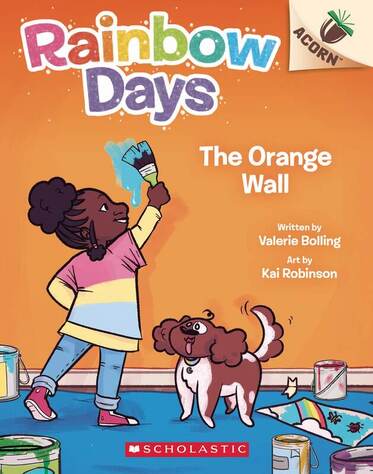
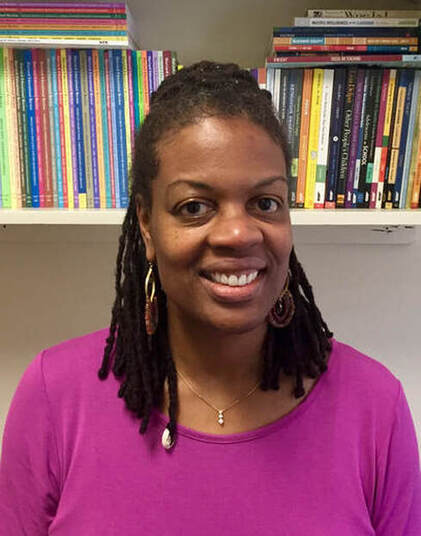
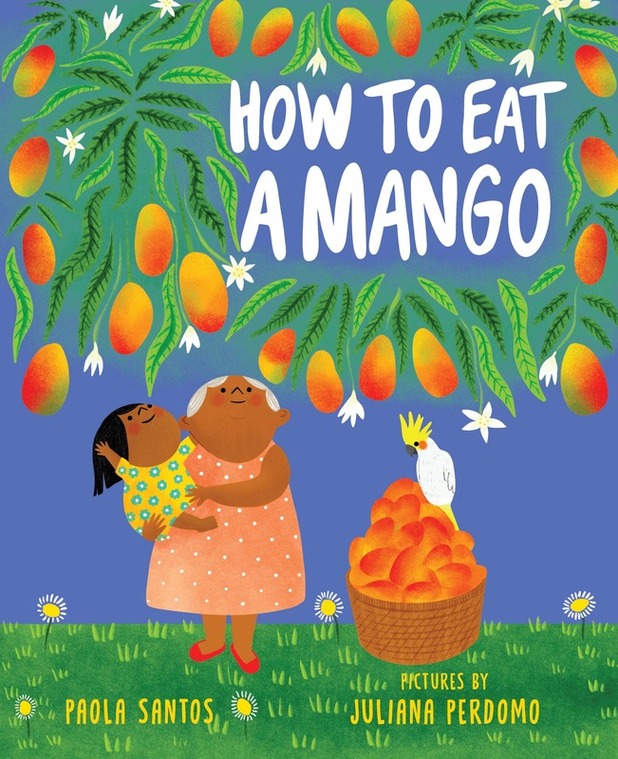
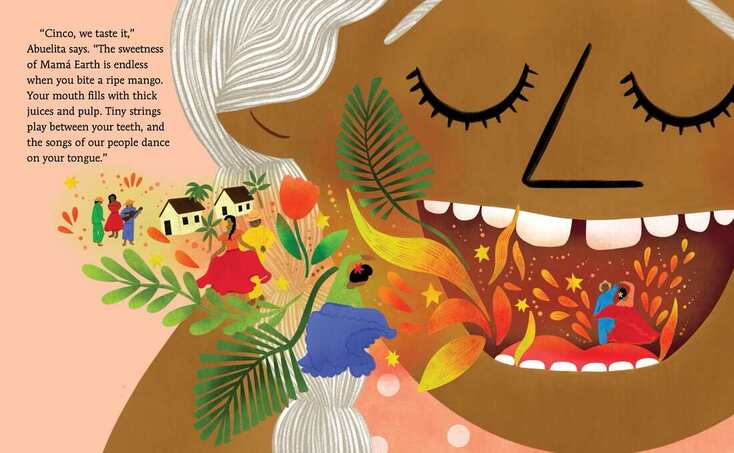
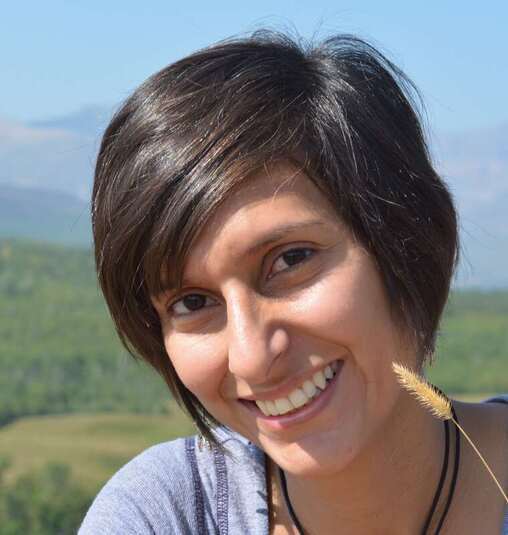
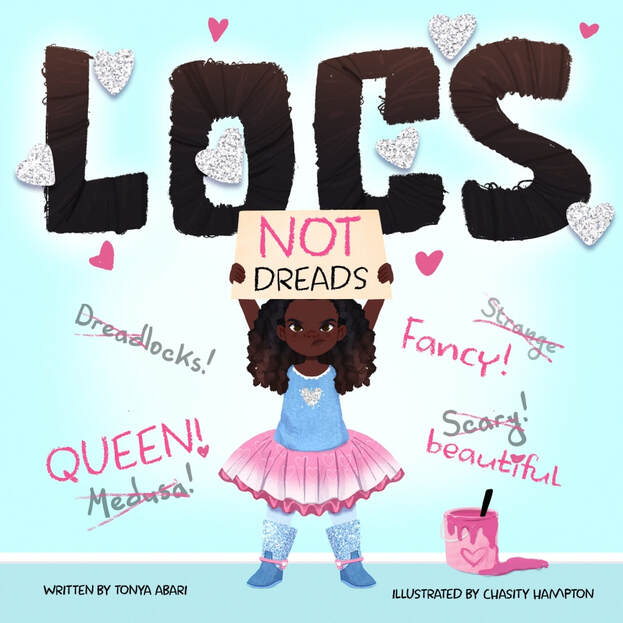
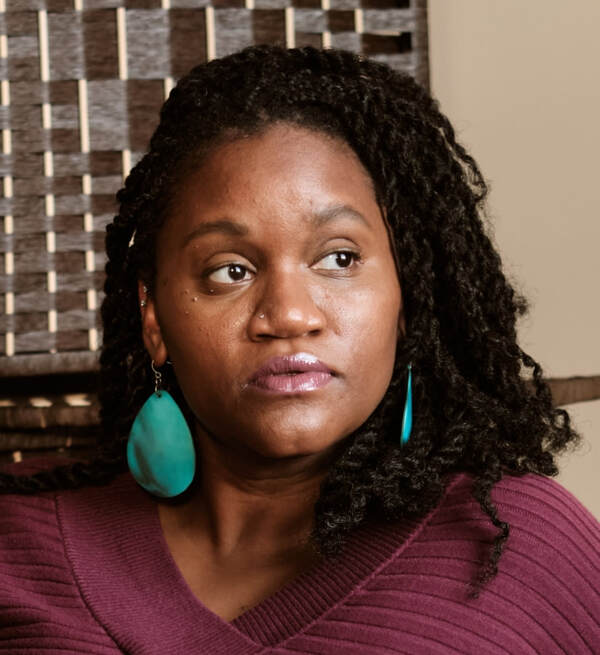
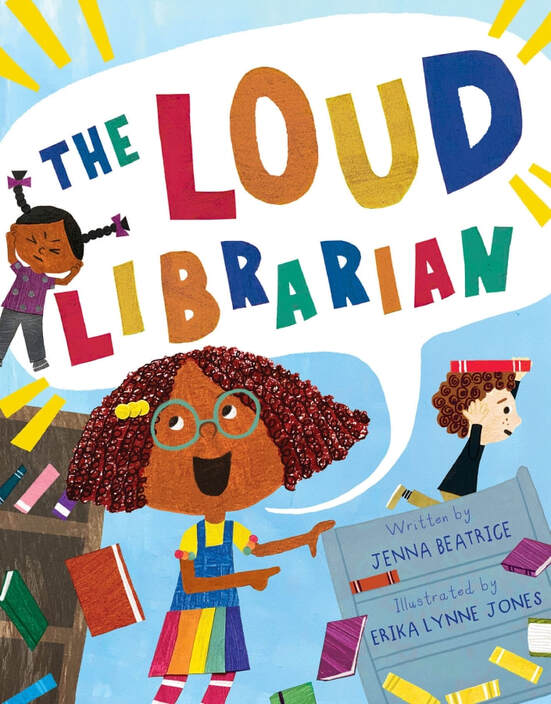
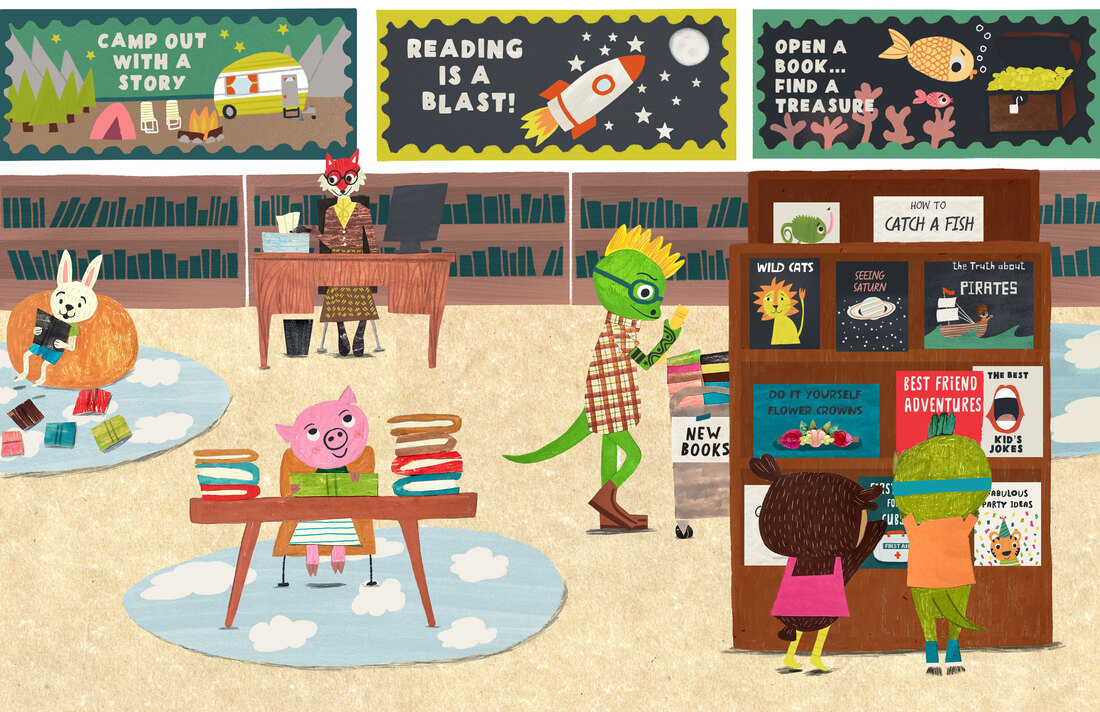
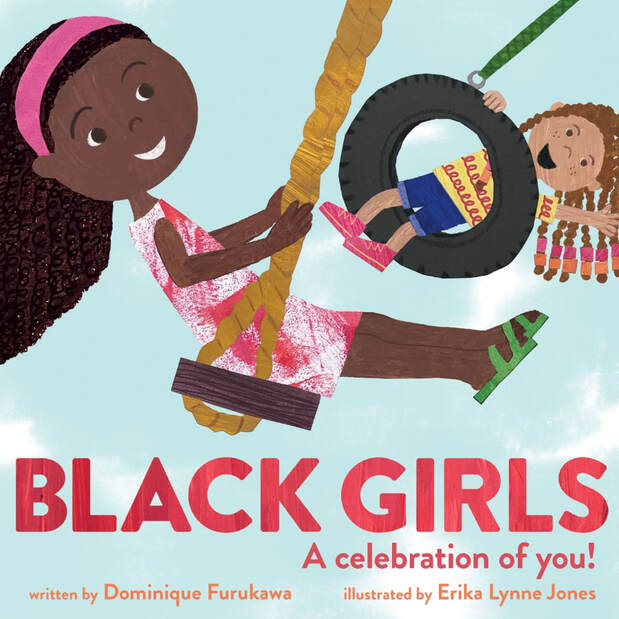
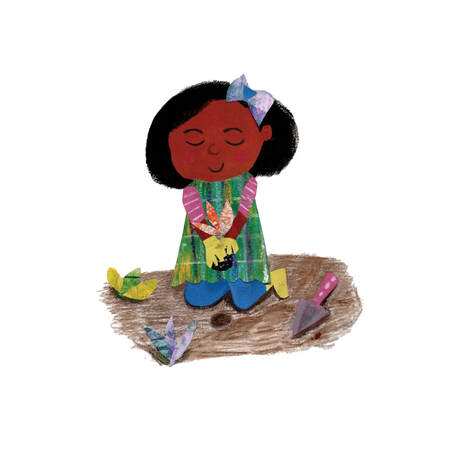
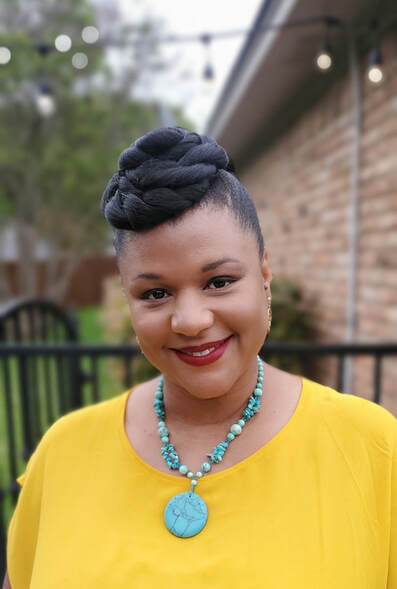
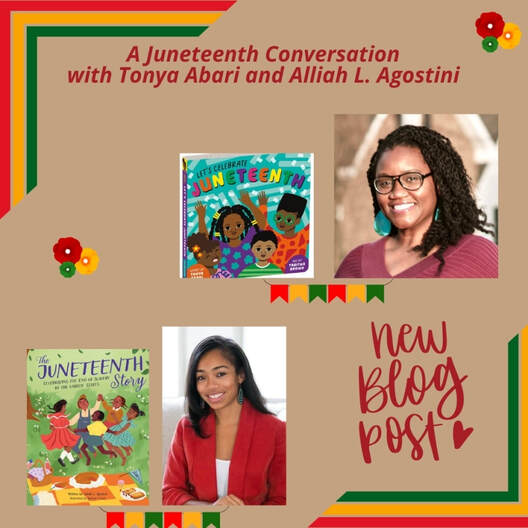
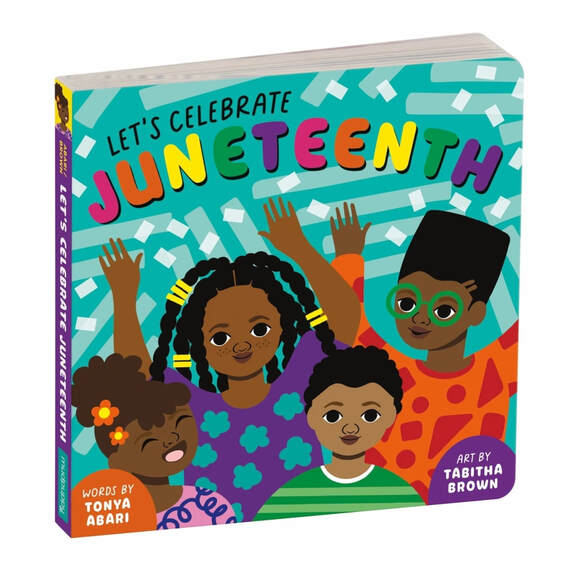
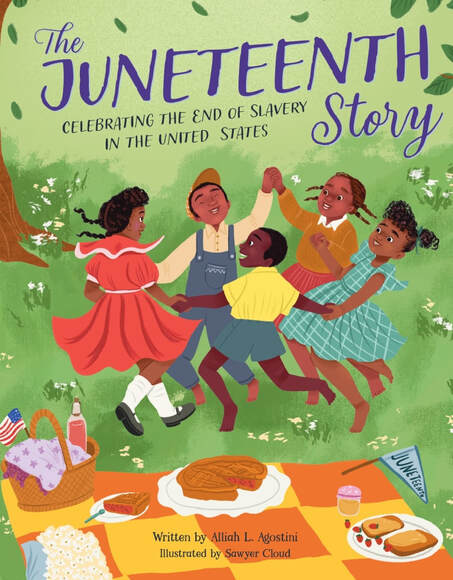
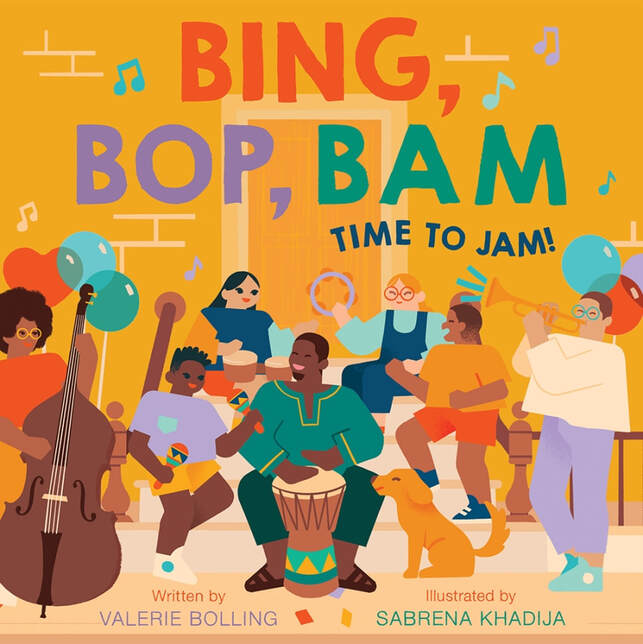
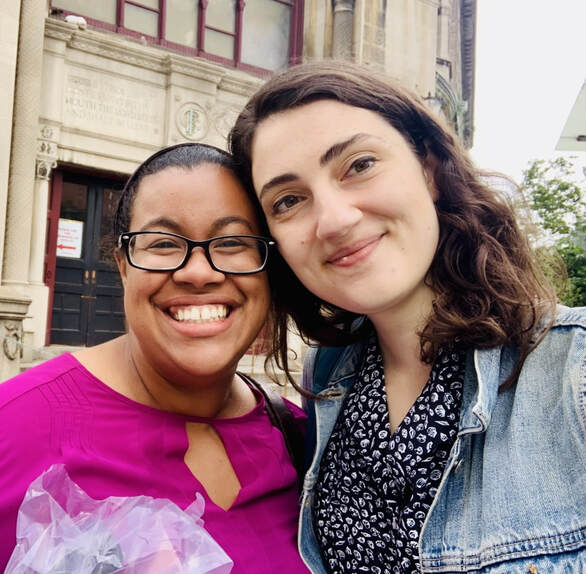
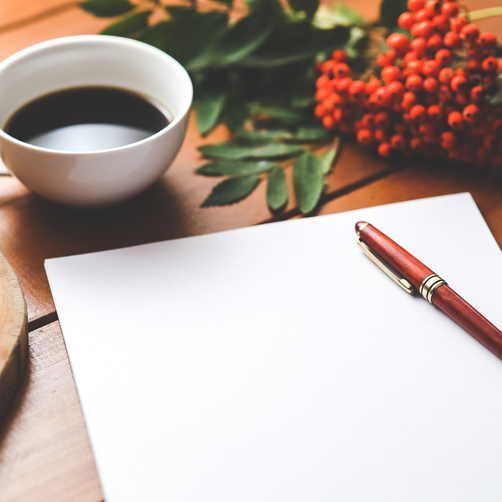
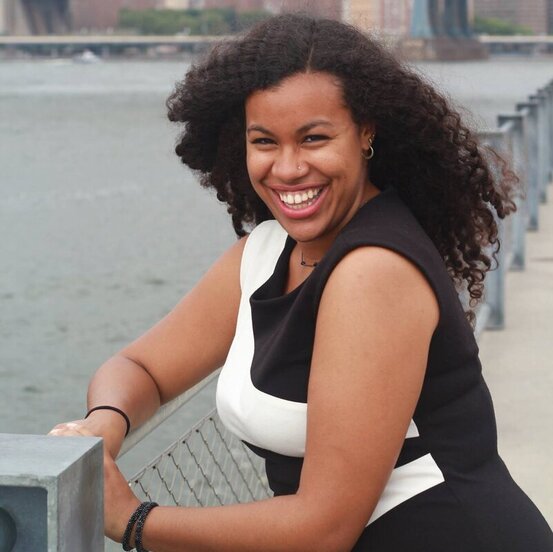
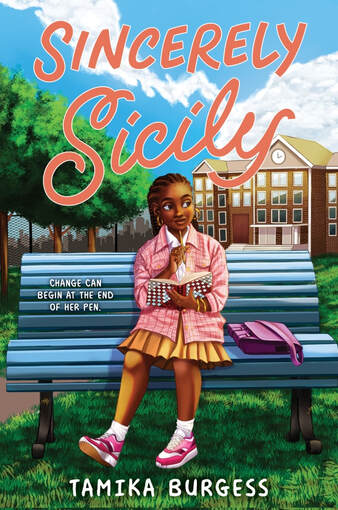
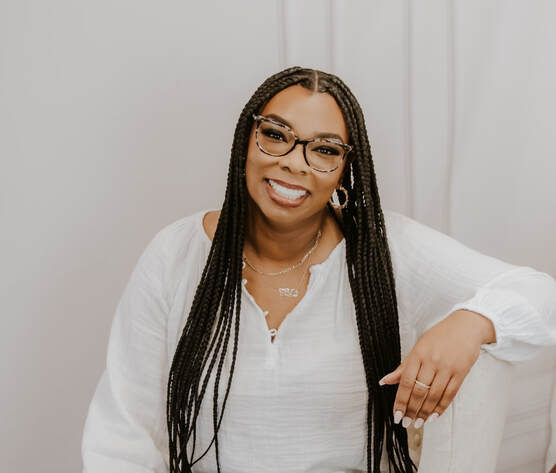
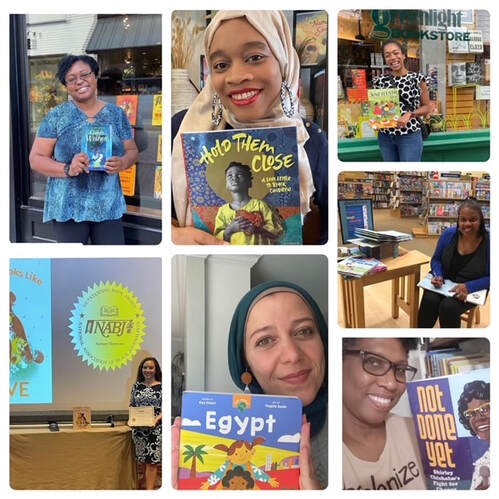
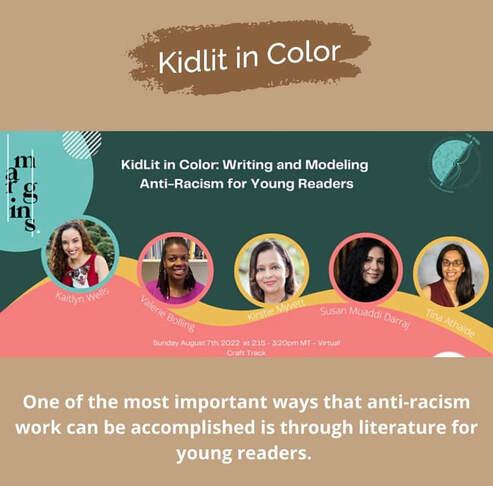
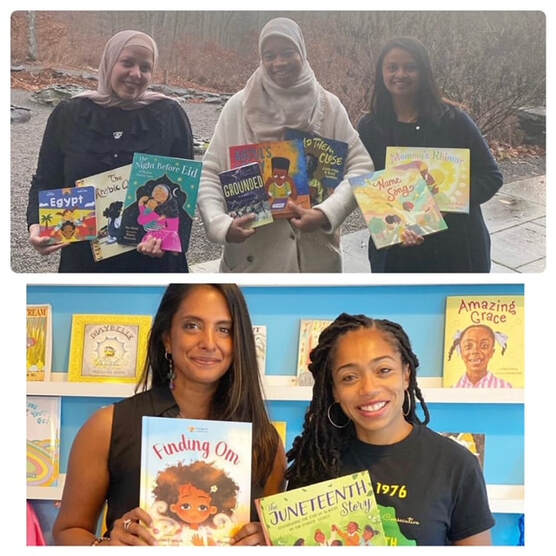
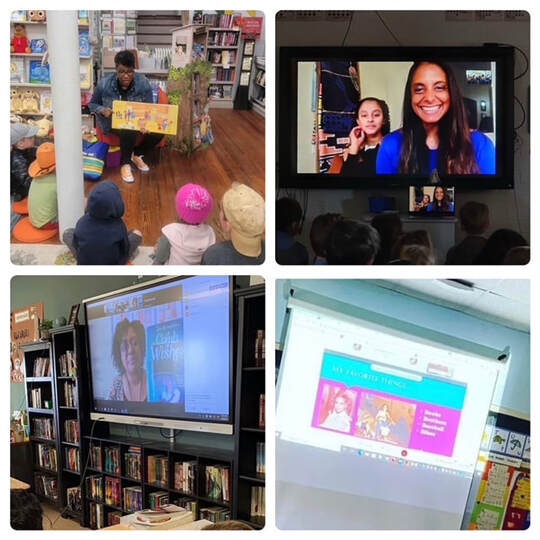
 RSS Feed
RSS Feed



